Violas and pansies are early spring to mid-summer bloomers. Pansies can grow to 8 inches (20cm) tall and have 2- to 3-inch (5-7.6cm) wide flowers. Violas are similar to pansies but smaller. Petal colors of both can be solid in shades of blue, purple, yellow, orange, and red as well as bi-color and tri-color blossoms. Leaves are oval, serrated, and green.
The blossoms and leaves of pansies and violas are unharmed by light frost. Plant in spring in cold-winter regions; grow as winter bedding plants in Zones 9-11.
Use pansies as edging plants, massed in beds, window boxes, and containers. Plants take only a few weeks to become established.
Flower Garden Success Products at Amazon:
- Wildflower Seed Mix Attracts Hummingbirds and Butterflies
- Eden Brothers All Perennial Seed Mix
- 10 pcs Stainless Steel Garden Hand Tool Set
- Gorilla Cart 4 Cu. Ft, 300-pound Capacity
- Neem Bliss 100-% Cold Pressed Neem Oil
- Safer Brand Insect Killing Soap
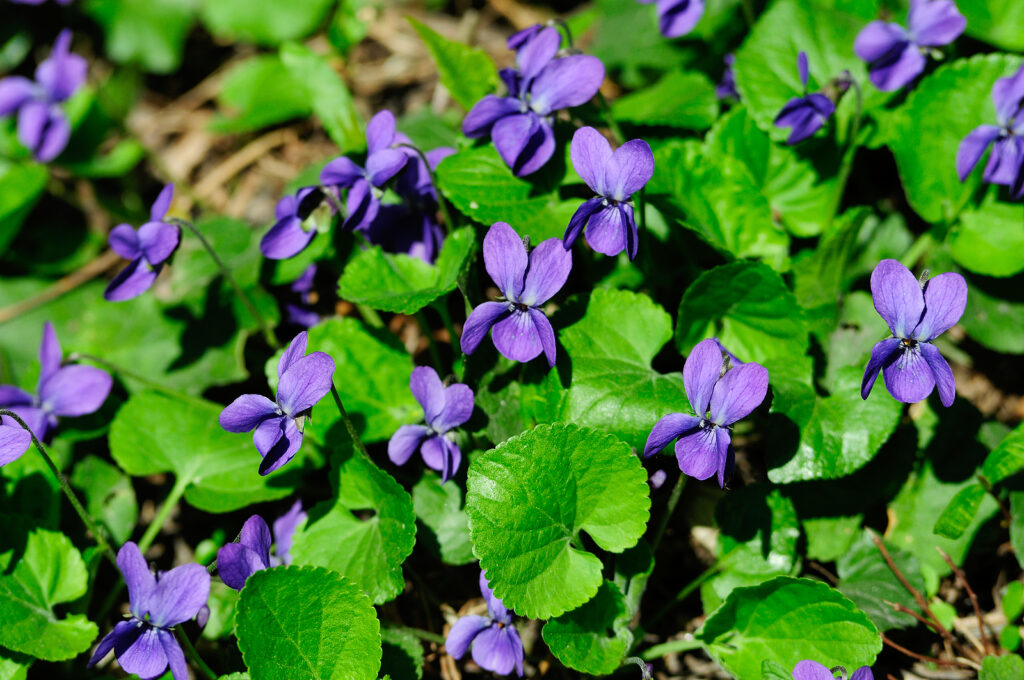
Get to know pansy and viola
- Plant type: Perennials; usually treated as cool-season annuals
- Growing Zones and range: Grown as an annual in all zones; can be grown as an annual in Zones 6-9
- Hardiness: Tender, prefers cool weather 30° to 70°F (-1.1°-21°C); killed by prolonged heat greater than 90°F (32°C)
- Height and width: 3 to 12 inches (7.6-30cm) tall and wide, depending on the type
- Foliage: Mid-green leaves are heart-shaped or oval, sometimes deeply lobed with stipules
- Flowers: Flat five-petaled flowers, 1 to 5 inches (2.5-12.7cm)
- Flower colors: White, yellow, black, brown, lavender, purple, many shades of blue and pink and red, some splotched
- Bloom time: Spring through fall between the first and last frosts; bloom all year in moderately cool temperatures
- Uses: Bedding, front of borders, containers, baskets
- Common name: Pansy, Viola, Violet
- Botanical name: Viola spp.
- Family: Violaceae
- Origin: Varied habitats in temperate regions worldwide
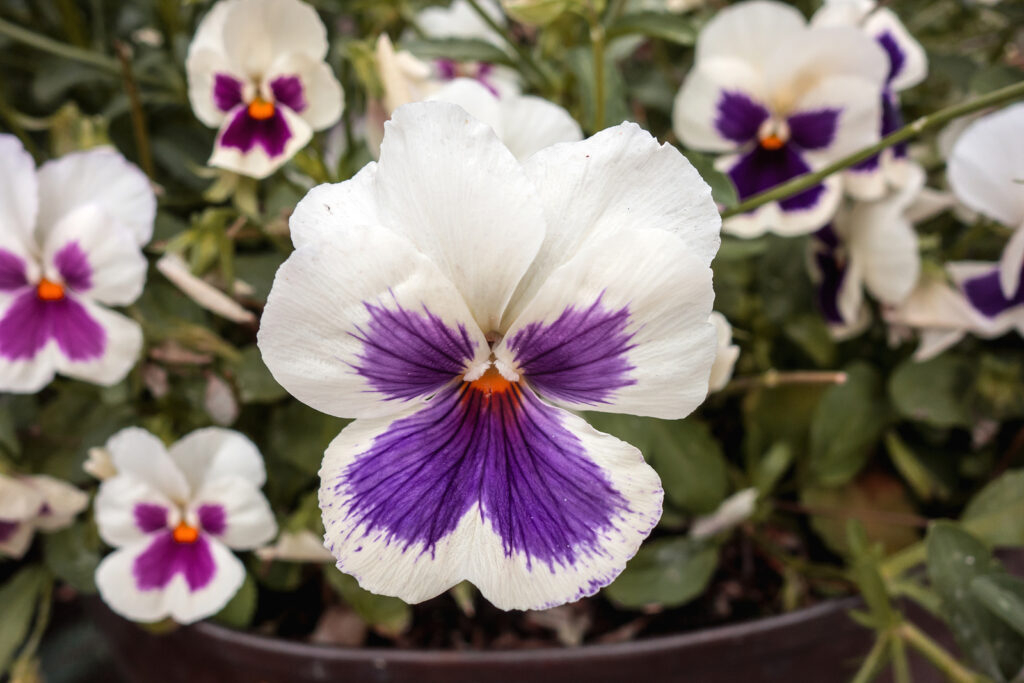
Where to plant pansy, viola, violet
- Plant pansies, violas, and violets in full sun in Zones 2-7; plant in light shade in hot summer regions of Zones 8-9.
- Grow pansies, violas, and violets in humus-rich, well-drained but moist soil.
Pansy, viola, and violet uses and companions
- Mass pansies, violas, and violets in beds, especially with spring-blooming bulbs.
- Pansies, violas, and violets are colorful in containers, hanging baskets, and rock gardens.
- Good garden companions for pansies and violas include Doronicum, Helleborous, Hosta, Polygonatum, Pulmonaria, Trillium.
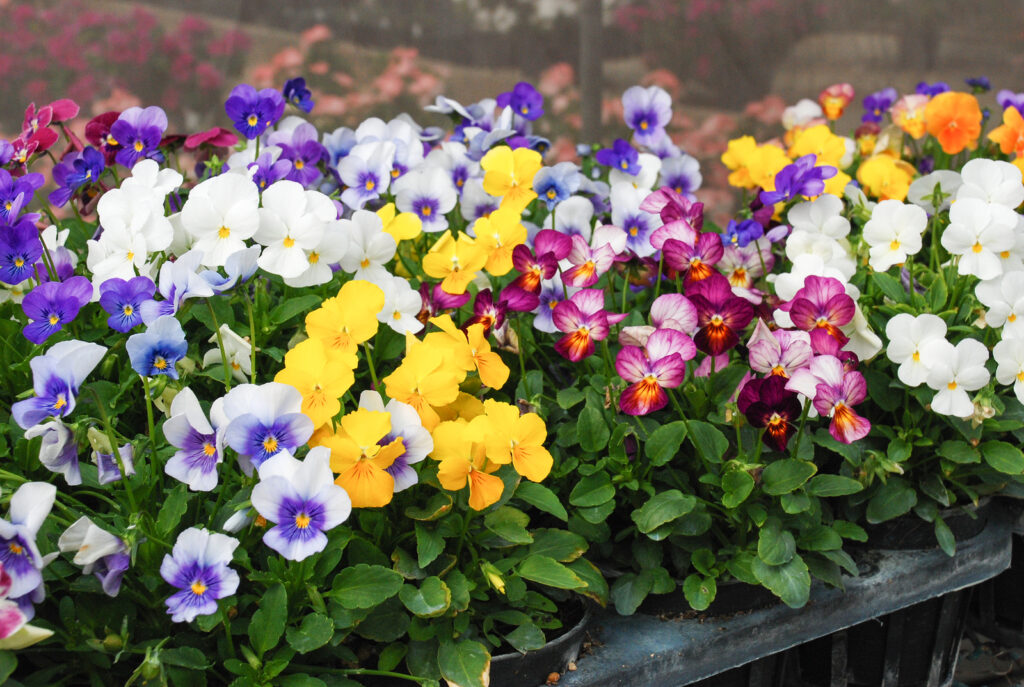
When to plant pansy, viola, violet
- Start seeds indoors in temperatures between 55° to 70°F (12.8°-21°C).
- Set pansies, violas, and violets in the garden a few weeks before the last frost in spring. In Zones 8-11, plant in autumn for spring bloom.
- Sow seed outdoors in late spring or summer in northern regions; sow seed outdoors in fall in Zones 9-11.
- Sow seed in a cold frame during cold weather for setting outdoors a week or two before the last frost in spring. Set seedlings outdoors when about 3 inches (7.6cm) tall.
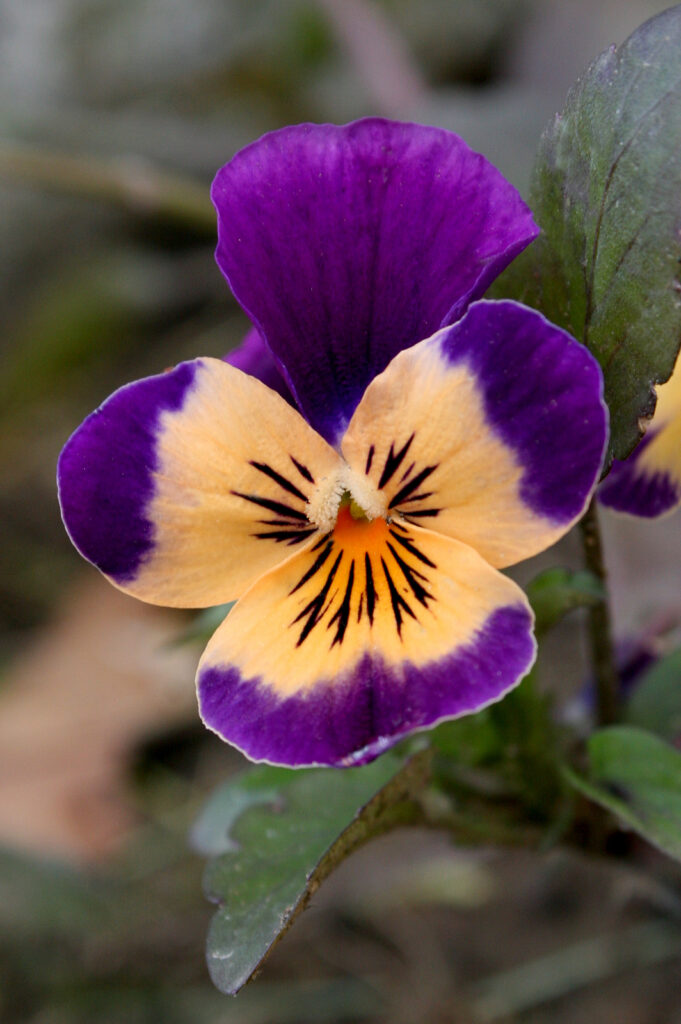
Planting and spacing pansy, viola, violet
- Start seed indoors in flats or 6-packs with dampened seed starting mix.
- Seed can be pregerminated before planting by wrapping the seed in a moist paper towel and place inside a plastic bag at room temperature for about a week.
- Sow seeds 1/8 inch deep; space seeds 1 to 2 inches (2.5-5cm) apart in bright light but not hot sun.
- Space pansies, violas, and violets 6 to 12 inches (15-30cm) apart.
- Add aged compost to the planting bed ahead of planting.
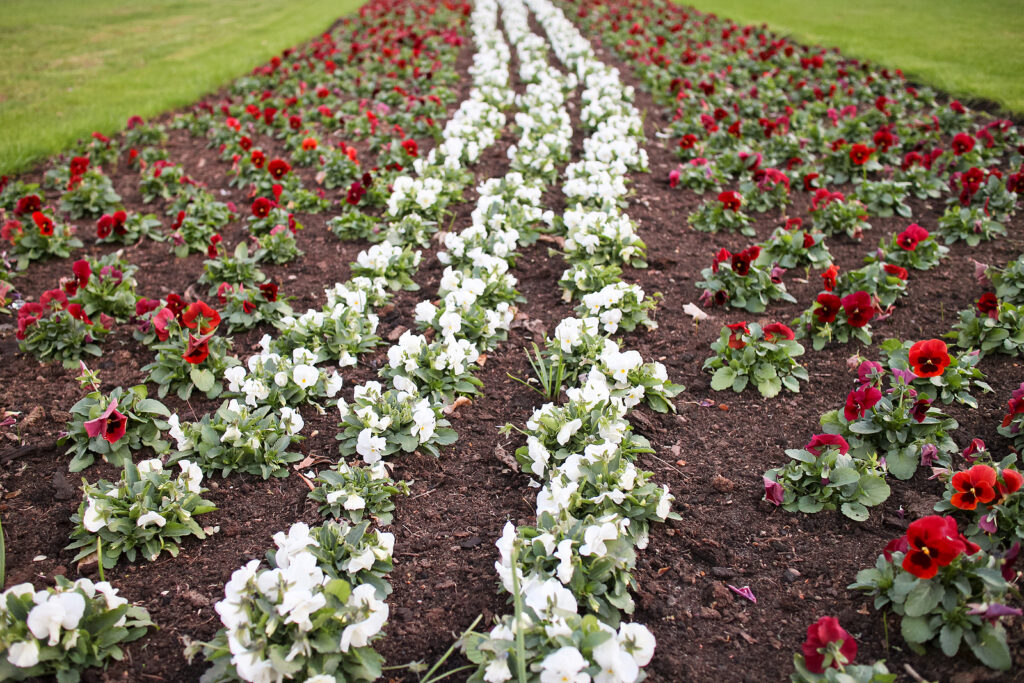
How to water and feed pansy, viola, violet
- Pansies, violas, and violets need abundant moisture. Keep the soil evenly moist.
- Fertilize pansies, violas, and violets by adding a slow-release fertilizer into the soil at planting time.
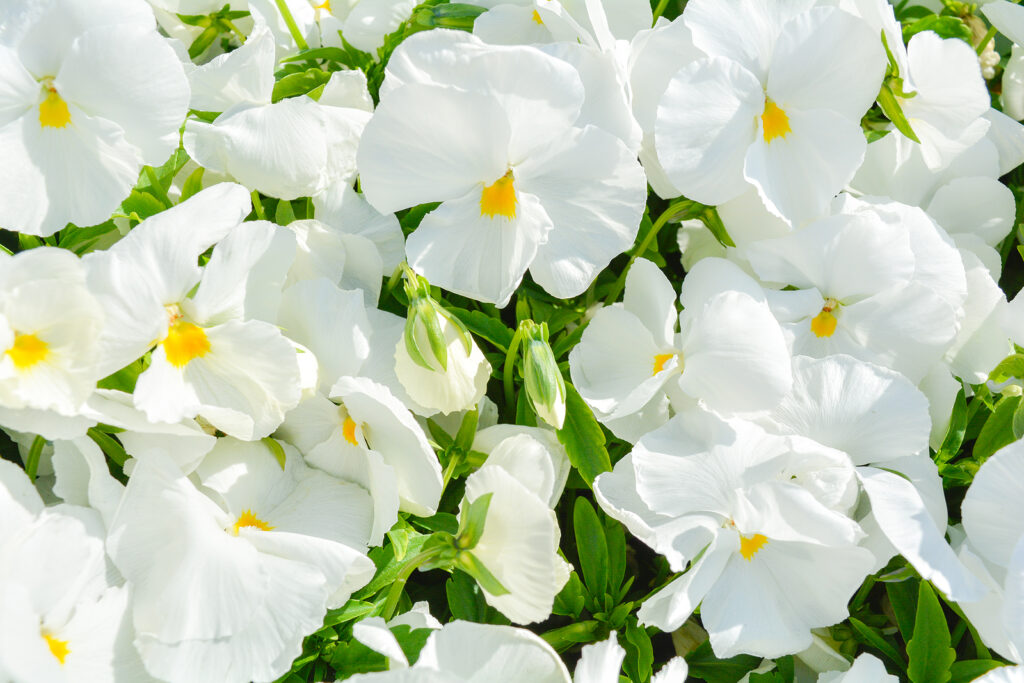
Pansy, viola, violet care
- Mulch around pansies, violas, and violets to conserve soil moisture.
- Keep the soil evenly; do not let the soil dry out. Water often during hot weather to keep plants cool.
- Mulch plants with leaf mulch to keep the soil cool and damp in hot weather.
- Fertilize lightly at planting time with an all-purpose fertilizer; feed plants every 6 weeks during the growing season.
- Pinch away spent blooms to encourage new blooms.
- Protect plants with a mulch of chopped leaves in winter; pull mulch back in spring
- Repel slugs with wood ashes or diatomaceous earth or trap them in partly submerged pans of beer.
Growing pansies in winter
- Pansies can be grown in mild to chilly winter regions, Zones 4 to 9.
- To grow pansies in chilly winter regions, grow Viola hiemalis. Viola hiemalis is a hardy pansy that can tolerate winter cold. Viola hiemalis is also known as winter flowering or ice pansies. The Latin term “hiemalis” refers to wintertime.
- The ideal soil temperature for V. hiemalis between 45° and 65°F (7.2 °–18 °C).
- V. hiemalis can survive frost and cold.
- Sow seed indoors 10 weeks before the first frost or transplant out well-rooted plants from the garden center.
- Keep the soil evenly moist, but not wet. Keep pots out of the rain or plant in slightly raised mounds that are well-drained.
- Feed pansies with a water-soluble fertilizer regularly to promote blooms.
- Spread an organic mulch around pansies; this will keep soil from splashing on plants during rain and also insulate the soil during cold weather.
- Deadhead spent blossoms regularly; this will encourage new blooms.
- Watch for snails and slugs and handpick and destroy them before they eat the leaves.
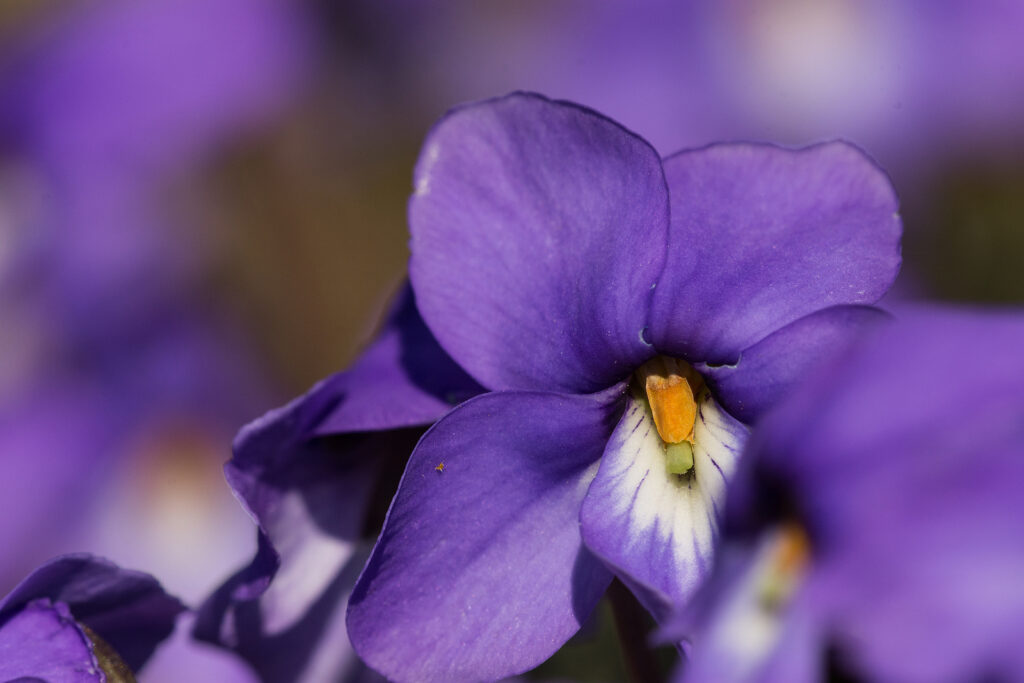
Pansy, viola propagation
- Grow from seed in early spring for summer blooms; start seed in late summer for autumn and winter bloom in Zones 9-11.
- Seeds germinate in 10 to 21 days at 65° to 70°F (18°-21°C).
- Fill flats or six-packs with dampened seed starting medium, space seeds an inch or two apart and 1/8 inch deep.
- Seeds can be pre-germinated before planting by wrapping them in a moist paper towel and keeping it inside a plastic bag at room temperature for about a week. Plant germinated seeds immediately (you may need to pick up seeds with tweezers).
- Divide crowded plants that survive winter; divide in spring when new growth begins; plant divisions 2 inches (5cm) deeper than they grew previously.
- Take cuttings 6 inches (15cm) long in spring; root cuttings in moist soil in shade.
Good Products for Seed Starting Success at Amazon:
- Jump Start Germination Station w/Heat Mat Tray, 72-Cell Pack, Dome
- Espoma Seed Starting Mix
- 200 Count- Jiffy 7 Peat Soil Seed Starting Plugs
- Seed Starter Kit with Humidity Dome (120 Cells Total Tray)
- AgrobriteT5 Fluorescent, 2-Foot, Grow Light System
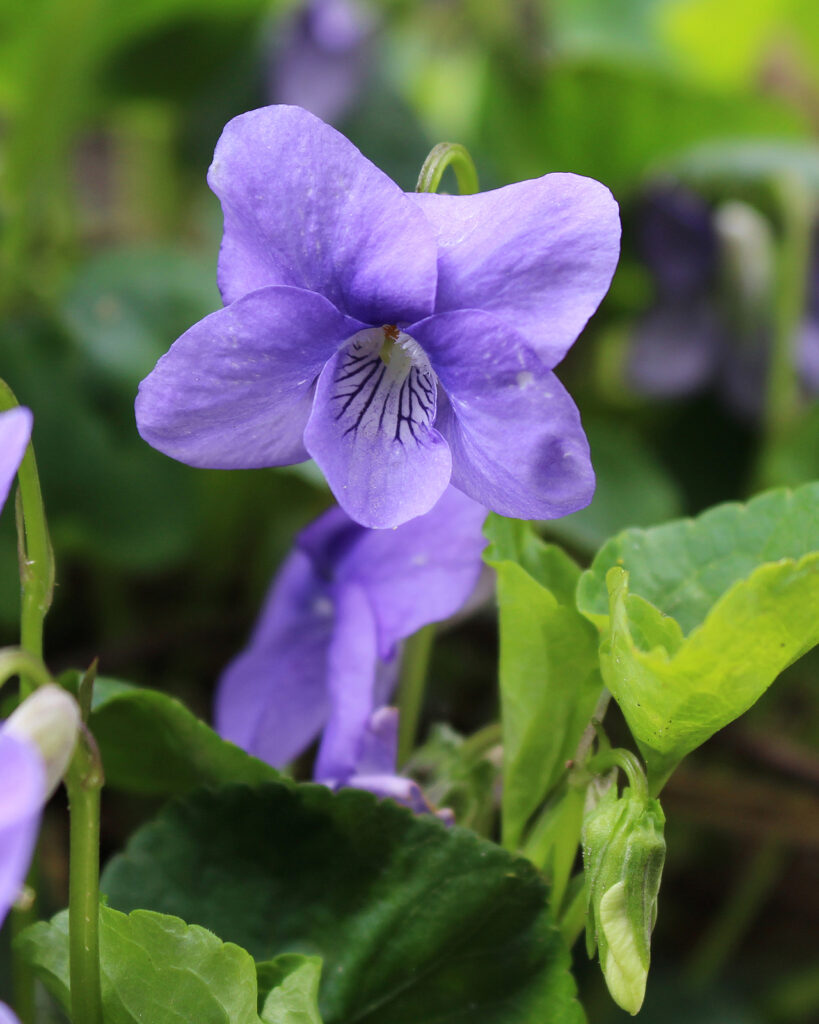
Pansy, viola, and violet varieties to grow
- Viola canadensis, Canada violet: Native wildflower grows 6 to 12 inches (15-30cm) tall with heart-shaped leaves; bears 3/4 inch white flowers with yellow eyes in spring; Zones 3-8.
- V. cornuta, viola, tufted pansy, horned violet: Annuals in all zones; grows mounded with wavy, toothed somewhat oval leaves; grows 5 to 12 inches (12.7-30cm) tall; lilac-blue flowers that look like small pansies; several cultivars with 1 inch wide flowers; recent cultivar have larger flowers with shorter spurs in solid colors or purple, blue, yellow, red, and white; Crystal strain has especially large flowers.
- V. hiemalis, ice pansy, winterblooming pansy. Cold hardy pansy variety with flowers slightly smaller than many hybrids, but more blooms; can survive frost and snow.
- V. labradorica, Labrador violet: Species grows 1 to 4 inches (2.5-10cm) tall spreading via prostrate stems; kidney to heart-shaped leaves with pale purple 1/2 inch wide flowers; good as a groundcover.
- Viola odorata, sweet violets, English violet, garden violet: Rhizomatous species grow to 8 inches (20cm) tall; round to heart-shaped leaves; 3/4 inch wide fragrant lavender-blue or white flowers; cultivars with white flowers; Zones 6 to 8.
- V. pedata, bird’s-foot violet: Native wildflower grows to 6 inches (15cm) tall and spreads to form 1-foot-wide (30cm) mounds; deeply cut leaves with narrow lobes resemble a bird’s foot; bears 1-inch-wide pale lavender blooms.
- V. sororia: woodland violet; heart-shaped leaves; small white flowers flat-faced like pansies.
- V. tricolor, Johnny-jump-up: Annual or short-lived perennial with 1-inch-wide flowers often with deep violet, purple, white, or yellow in a facelike pattern; grows 2 to 6 inches (5-12cm) tall; it reseeds easily.
- V. x wittrockiana, pansy: Cool-weather annual grows 6 to 9 inches (5-17.7cm) tall with flowers 2 to 4 inches (2.5-10cm) wide, colors include violet, maroon, bronze, yellow, orange, lavender, deep purple, lilac-blue, and white; several cultivars including ‘Crystal Bowl Series’ which come in an array of solid colors.
Pansy and viola frequently asked questions
Q: When should I plant pansies in the garden?
A: Pansies prefer cool weather, especially cool nights. You can plant them in the garden as soon as the soil can be worked in spring. If you live where temperatures do not drop below 20°F, you can plant and mulch pansies and violas in the fall for blooms in spring. Pansies will continue to bloom until the weather becomes hot.
Q: Can you suggest some pansy varieties that can withstand warm weather and some that can withstand cold temperatures?
A: Hybrid pansies are more heat-resistant than older types. Crystal Bowl is a multiflora that is both heat and rain resistant. Springtime is a multiflora and among the most heat resistant. Majestic Giant is a grandiflora. Mammoth Giant is a grandiflora but is not heat resistant. Roc is cold-tolerant and a good choice for fall planting. Universal is a multiflora and is very cold hardy.
Q: What is the difference between grandiflora and multiflora pansies?
A: Grandiflora pansies have large flowers. Multifloras have smaller flowers but a greater number of them. Multifloras bloom earlier than grandifloras.
Q: How do I start pansies from seed?
A: Start pansy and viola seeds indoors 14 weeks before the outdoor planting date. Place the seeds in the refrigerator in moistened growing medium for several days before sowing. Cover the seeds completely; they need darkness to germinate.
Q: How do I care for pansies and violas?
A: Grow pansies and violas in full sun or partial shade. Grow pansies in humus-rich, well-drained but moist soil. Fertilize them with an all-purpose organic fertilizer at planting time and again about one month later. If plants become leggy, pinch them back to keep them compact.
Q: Will pansies bloom indoors in winter?
A: For blooming pansies indoors in winter, sow seeds in mid to late summer. Transplant seedlings into individual pots and bring them inside before the first hard freeze. Place them in a light room with a big window with temperatures not warmer than 45°F. Pansies indoors are best grown in a cold greenhouse.















